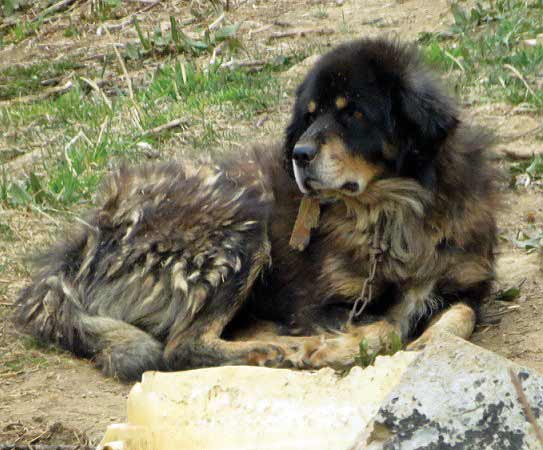George Schaller is a field biologist with a lifelong passion for large animals. His research has taken him to Alaska, Africa and Asia, including Nepal and Tibet. Schaller’s writings describe a valiant fight globally, and especially in Tibet, for animal protection and habitat conservation in the face of rampant encroachment, poaching, animal parts smuggling, ignorance and greed. He has seen it all, and writes fervently about the need and the difficulties of working with government officials and local people to encourage wildlife conservation.
‘Tibet Wild: A Naturalist’s Journey on the Roof of the World’ updates and upgrades Schaller’s earlier book, ‘Tibet’s Hidden Wilderness: Wildlife and Nomads of the Chang Tang Reserve’ (1997), a coffee-table size book with great photos and ample text. He also wrote ‘Wildlife on the Tibetan Steppe’ (2000), the first detailed look at the Chang Tang, one of the world’s most remote and least known ecosystems.
 Schaller was the first Westerner permitted to traverse the Chang Tang for research. There, on long expeditions with Chinese and Tibetan scientists, he has spent several decades studying Tibetan antelope, gazelle, argali sheep, wild ass, wild yak, wolf, snow leopard, and bear.
Schaller was the first Westerner permitted to traverse the Chang Tang for research. There, on long expeditions with Chinese and Tibetan scientists, he has spent several decades studying Tibetan antelope, gazelle, argali sheep, wild ass, wild yak, wolf, snow leopard, and bear.
In one full chapter he also describes the tiny ‘pika’ (prairie dog), which plays a previously undetermined but crucial role in the Tibetan ecosystem. The pika’s importance is widely misunderstood in Tibet, with potentially drastic ecological consequences if it is exterminated.
Schaller also debunks a prevailing but misguided belief about the source of the super fine shatoosh wool that goes into expensive Kashmiri shawls and scarves. For years, the sale of shatoosh was justified by a myth that it comes from laboriously plucking fine ibex wool from bushes that the animals have passed through. That’s a lie!, for shatoosh is not from ibex. It is the fine wool of the endangered chiru (Tibetan antelope), illegally slaughtered by uncaring hunters, then smuggled by unscrupulous traders south across the Himalayas where it is woven for sale at high prices to discriminating buyers.
The fate of the chiru has shocking causes and consequences, Schaller says. During the 1980s and 1990s, “Nomads, officials, truck drivers, the military and others” – including organized gangs of armed poachers – “killed chiru for quick profit.” He was especially shocked to discover that female chiru “were gunned down just before or after giving birth, killing the new generation... leaving bloody carcasses stripped of hides to rot and newborns abandoned to starve.” In time, he realized that “with so many guns against them” he could no longer simply continue his peaceful studies. Furthermore, given the vast territory that the chiru use, he realized that by protecting the chiru, “all other species in the region, the whole ecosystem, would benefit.” The hunting and sale of chiru wool is now banned, and as a result of the painstaking studies by Schaller and his Chinese and Tibetan colleagues, the Chinese government has set aside more than 125,000 square miles of the Chang Tang as a special wildlife reserve - second largest in the world.
‘Tibet Wild’ has another aspect. In it, Schaller also writes insightfully about his own life, including becoming a scientist and how field research is conducted.
George B. Schaller’s scientific accomplishments are legion, as told in many scientific articles and in several renowned and award-winning books. They include ‘The Serengeti Lion’, ‘The Year of the Gorilla’, ‘The Last Panda’, and ‘Stones of Silence: Journeys in the Himalaya’. The latter deals extensively with wildlife research in Nepal’s high Himalayas. A more popular account of one of Schaller’s research expeditions to Shey and Phoksumdo in northwest Nepal is told in Peter Matthiessen’s ‘The Snow Leopard’ (1987). n











